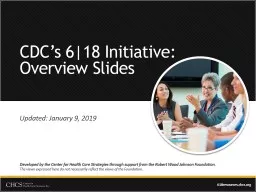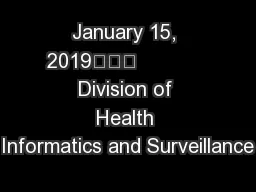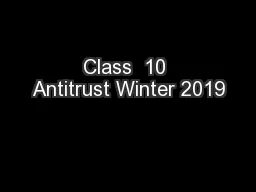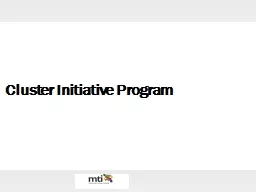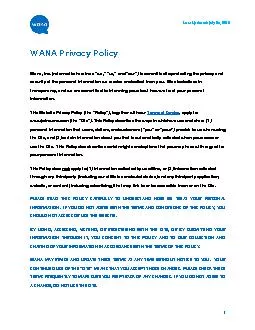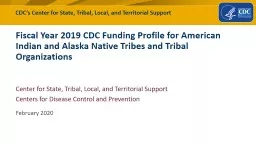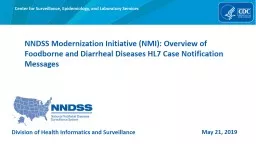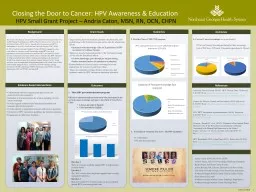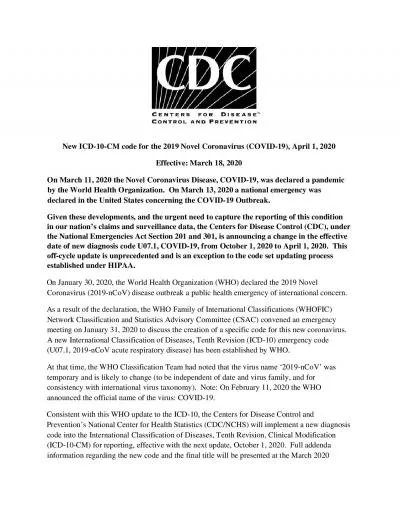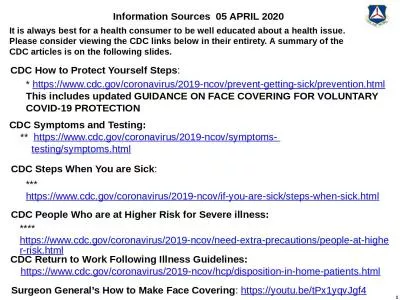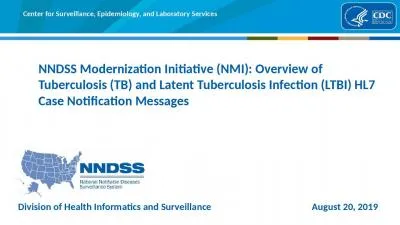PPT-CDC’s 6|18 Initiative: Overview Slides Updated: January 9, 2019
Author : cheryl-pisano | Published Date : 2019-11-04
CDCs 618 Initiative Overview Slides Updated January 9 2019 Developed by the Center for Health Care Strategies through support from the Robert Wood Johnson Foundation
Presentation Embed Code
Download Presentation
Download Presentation The PPT/PDF document "CDC’s 6|18 Initiative: Overview Slide..." is the property of its rightful owner. Permission is granted to download and print the materials on this website for personal, non-commercial use only, and to display it on your personal computer provided you do not modify the materials and that you retain all copyright notices contained in the materials. By downloading content from our website, you accept the terms of this agreement.
CDC’s 6|18 Initiative: Overview Slides Updated: January 9, 2019: Transcript
Download Rules Of Document
"CDC’s 6|18 Initiative: Overview Slides Updated: January 9, 2019"The content belongs to its owner. You may download and print it for personal use, without modification, and keep all copyright notices. By downloading, you agree to these terms.
Related Documents

